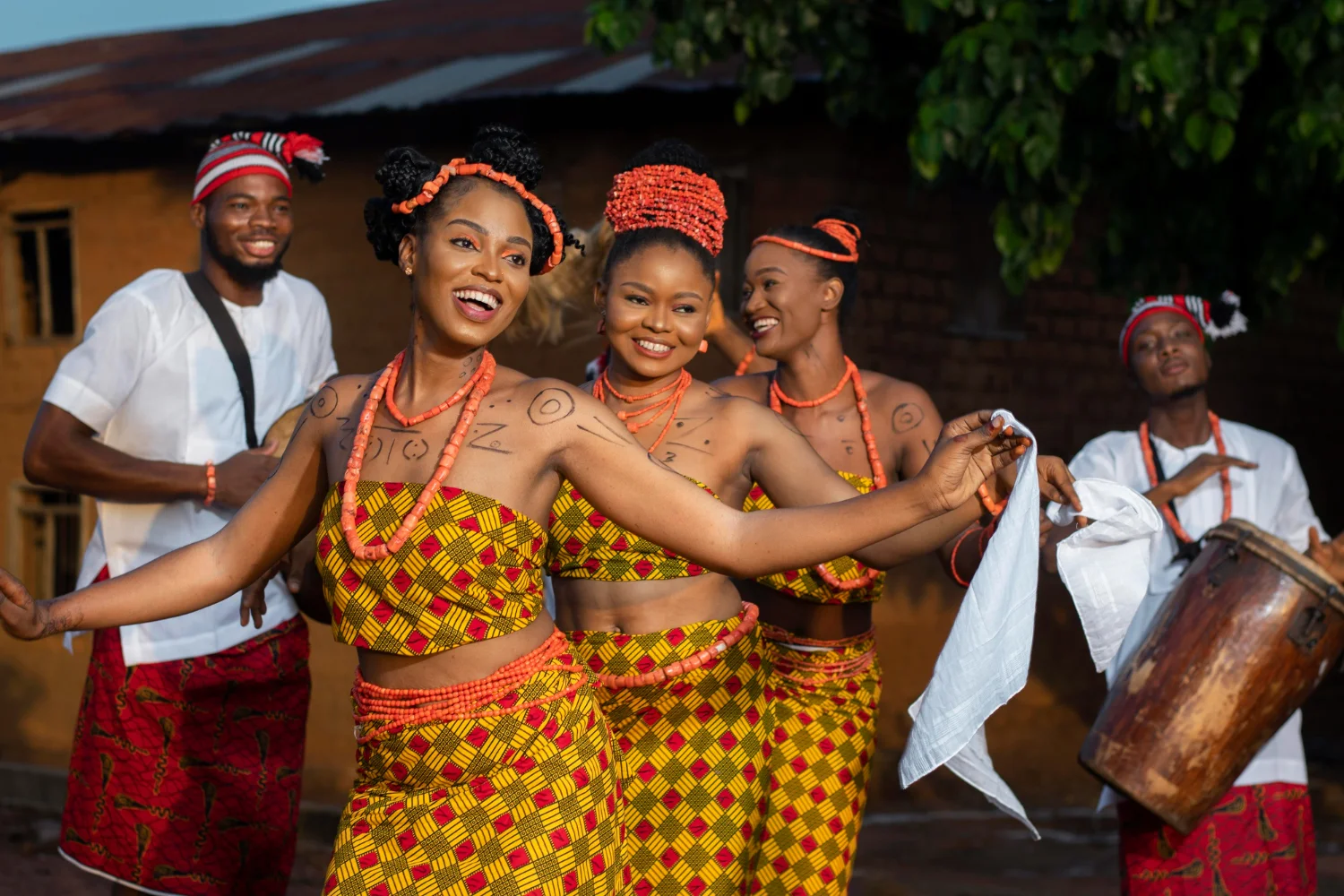Expressing Gratitude After Gawai: Thank You Messages and Well Wishes
Gawai celebrations always bring a flood of warm wishes from loved ones. But have you ever received a reply so thoughtful it stuck with you long after? With a few tweaks to your responses, you can craft messages that truly touch hearts.
When my grandparents sent their greeting this year, I was moved by the caring note they included. Recalling traditions we’d shared since I was young filled me with gratitude. I knew I wanted to reply in a way showing how much their family meant.
Here are some strategies for crafting replies that will resonate:
Laugh Together with Humor
For my cousin Joey who loves a good joke, I replied:
“Thanks for the wishes, cuz! Remember the time we accidentally poured soy sauce into Dad’s bubur hitam instead of palm sugar? I’m still not living that one down haha. Happy Gawai!”
Appreciate Whole Hearts
To my neighbor Mak Cik Mas, a pillar of our community, I wrote:
“Your constant kindness means so much. Thank you for watching out for all of us and carrying on traditions with such care. Our kampung wouldn’t be the same without you. Selamat Hari Gawai!”
Reconnect Through Shared Memories
For old friends overseas, I sent photos from our school Gawai performances and said, “Remembering our antics brings smiles. I hope we can create new memories together again soon. Wishing you and your family a festive Gawai filled with fun memories made. Thank you for your well-wishes!
Thinking Outside the Box with Your Replies
As Gawai Day approaches, you’ll undoubtedly receive many well-wishes from friends and family celebrating the harvest festival. While a simple “Thank you!” suffices in most cases, putting a bit more thought into your responses can take your replies to the next level. Consider moving beyond stock phrases to more meaningfully acknowledge the sentiment behind the greetings.
For longtime friends, craft personal messages reminiscing about shared Gawai celebrations past. Jot down a funny memory from your childhood years together to give them a smile. You could also send along photos from get-togethers of years gone by for a extra touch of nostalgia.
Making your replies unique shows you took the time to recognize the individual rather than sending a mass template to all contacts. Customized responses will be better received and remembered long after the festivities end.
Using Humor to Spread More Cheer
A lighthearted tone can uplift spirits even more during this joyous occasion. Consider incorporating a funny meme, joke or video link into your replies depending on your relationship with the sender. This helps communicate your appreciation for the wishes in an engaging, memorable way.
For close cousins who share your silly sens of humor, reply with a goofy selfie or your best Gawai Day pun. More conservatively, keep any jokes family-friendly but don’t be afraid of a little cheer-spreading laughter. Humor is a timeless way to start conversations and strengthen connections throughout the year.
A comedic twist reminds people Gawai is meant to be enjoyed, not just passively acknowledged with rote replies. Laughter has a remarkable way of lifting moods and spreading goodwill. So go ahead and inject some levity into your messages when appropriate—it may be just what some need to smile a little wider this festive season.
Showing Gratitude with Heartfelt Messages
While jokes have their place, more serious well-wishers may appreciate a heartfelt reply reflecting on the meaning behind their greeting. Take a moment to thoughtfully consider what their wish signifies to you on a personal level. Jot down a few sentences sharing how much their thoughtfulness means especially during this time of celebration, renewal and thanksgiving.
For elderly relatives, a short note expressing thanks for the role they’ve played guiding your family’s Gawai traditions over the decades could bring joy. Acknowledging their influence nurtures intergenerational bonds of care, respect and remembrance.
Community leaders and spiritual figures may receive gratitude for stewarding cultural values year-round which Gawai celebrates. Thank them for efforts sustaining heritage for future generations. Sincerity moves people most deeply—a few words from the heart can strengthen important relationships and last long after a text or post is read.
Making Replies Reflect the Season’s Spirit
When crafting your messages, avoid generic language and instead use vocabulary reflecting Gawai themes of appreciation, togetherness, abundance and renewal. Express enthusiasm for reconnecting with loved ones to partake in time-honored rituals welcoming the bountiful harvest season.
Convey hopes of celebrating together in person if possible or virtually via video chats and photo shares if distance prevents it. Recommend specific traditional dishes, songs or activities to experience fully immersing in cultural traditions even remotely.
Share picturesque landscape photography or video representing nature’s natural blessings which Gawai commemorates, like verdant rice fields, fruit orchards or scenic vistas. Creative commons media helps set a festive mood transporting well-wishers into the celebratory spirit wherever they are.
Your replies themselves should epitomize Gawai’s emphasis on cherishing relationships and earth’s gifts through thoughtful, uplifting correspondence that nourishes the soul. Take care replies reflect the season’s essence of thankfulness, community and reconnection to cultural roots.\
Related: Happy Eid al Fitr Responses
Giving Thanks Publicly through Social Media
While personal messages suffice for close circles, publicly acknowledging wider communities’ greetings on social media amplifies gratitude’s reach. A short Facebook, Instagram or Twitter post thanking all sending warm wishes helps express appreciation visibly for everyone to see.
Include relevant hashtags like #GawaiDay or #SarawakFestival so posts organically surface to more viewers. A colorful graphic, upbeat song clip or scenic video alongside the message adds visual flair boosting engagement.
Remember to tag specific community groups, organizations, public figures or even local government bodies whose ongoing contributions sustain cultural vitality. The acknowledgment promotes positive relationships and highlights their commendable roles.
Public displays inspire others to pay similar tributes, spreading more goodwill. Comments allow receiving heartfelt reactions strengthening online interactions too. But keep any exchanges respectful and on an uplifting note befitting the harmonious occasion. Social platforms elevate gratitude’s power when responsibly leveraged.
Using Replies to Foster Inclusion
Replying thoughtfully to greetings offers opportunities advocating inclusion welcoming all to partake in celebrations. For newcomers to the community unfamiliar with traditions, give a short cultural primer detailing Gawai’s significance and invite them to learn more.
Explain how anyone, regardless of background, can participate in public festivities or volunteer helping plan events. Recommend kid-friendly activities allowing mixed families to bond over shared joys. Highlight local organizations increasing multicultural understanding through cultural exchanges too.
Representation matters—minorities may feel more comfortable getting involved seeing others like them already taking part. Lead with an open, welcoming spirit acknowledging diversity strengthens heritage’s continuity benefitting all. Inclusiveness fosters understanding and goodwill between groups, important values Gawai uplifts.
Taking Replies Further through Follow-Ups
While initial replies express gratitude, consider ways maintaining connections beyond the season through follow-ups. Thoughtful follow-through shows care authentically rather than fleeting surface-level gestures. Check-in after festivities concluding to continue conversing and build on goodwill sown.
For those away from home, ask how celebrations went and if any special memories stood out. Share your own highlights keeping distant loved ones feeling included. Sending photos later allows all reminiscing together. These small acts nurture relationships so distance doesn’t diminish closeness.
Inquire about anyone new in recipients’ lives to welcome, like babies born or partnerships formed, offering congratulations. Ask after elders’ well-being showing solicitude. Offer helping hands for any difficulties arising; community exists for mutual aid during all seasons. Follow-ups personalize initial greetings’ warmth long-term.
Consider scheduling video chats to commemorate traditions together next year if possible despite any locations. Planning special bonding activities maintains precious connections when face-to-face meetings aren’t feasible. Consistent care speaks louder than one-off greetings alone over time.
Thanking with Humble Appreciation
However replies are conveyed, maintain a humble, gracious tone uplifting others. Avoid coming across as conceited taking compliments for granted. Express feeling fortunate, not entitlement, for well-wishers’ affection. Let humility and sincerity carry conversations further in a dignified manner befitting the dignity of all involved.
Steer clear of ostentatious self-promotion or exploiting relationships solely for personal gains damaging goodwill. Nourish interactions altruistically through consistency, honesty and understanding. Maintain respect for all regardless of status, as mutual regard forms the firmest of foundations. Staying grounded inspires emulation and brings out the best in relationships.
In all things, exude thankfulness simply through gentle words and deeds. Small gestures often yield greatest dividends; true appreciation differs little in cost yet means the world. This spirit of gratitude lies at Gawai’s heart uniting all wishing each other joy – may thoughtful replies nourish bonds for many seasons to come!
FAQs
What is the history of Gawai Dayak?
- Origins in Animism: Gawai Dayak’s roots lie in the animistic beliefs of the Dayak people, where festivals often revolved around agricultural cycles and honoring spirits.
- Radio-Initiated Unification: In the 1950s, radio producers in Sarawak promoted the idea of creating a unifying festival for the diverse Dayak communities. This led to the first organized Gawai Dayak celebration in 1962.
- Official Recognition: Initially called “Sarawak Day” to promote inclusivity, it was officially recognized as “Gawai Dayak” in 1965 and became a symbol of unity and pride for the Dayak people.
Does Bidayuh celebrate Gawai?
Yes! The Bidayuh are one of the main Dayak ethnic groups in Sarawak, and Gawai Dayak is a major celebration for them as well. They observe it with their own unique customs and traditions alongside other Dayak communities.
What is the famous festival in Malaysia?
Diversity of Celebrations: Malaysia boasts a multitude of famous festivals due to its multicultural society. Here are some of the most widely celebrated:
- Hari Raya Aidilfitri: Marks the end the Muslim fasting month, Ramdhan.
- Chinese New Year: Celebrated grandly by the Chinese community, with lion dances and family gatherings.
- Deepavali: The Hindu festival of lights, symbolizing the triumph of good over evil.
- Gawai Dayak: The iconic harvest festival of Sarawak’s Dayak people.
Does Sabah celebrate Gawai?
No, but they have a similar festival. Sabah has its own harvest festival called Kaamatan, primarily celebrated by the Kadazan-Dusun and Murut ethnic groups. While Gawai Dayak (Sarawak) and Kaamatan (Sabah) both celebrate bountiful harvests, they have distinct rituals and traditions reflecting the specific cultures of their respective states.

